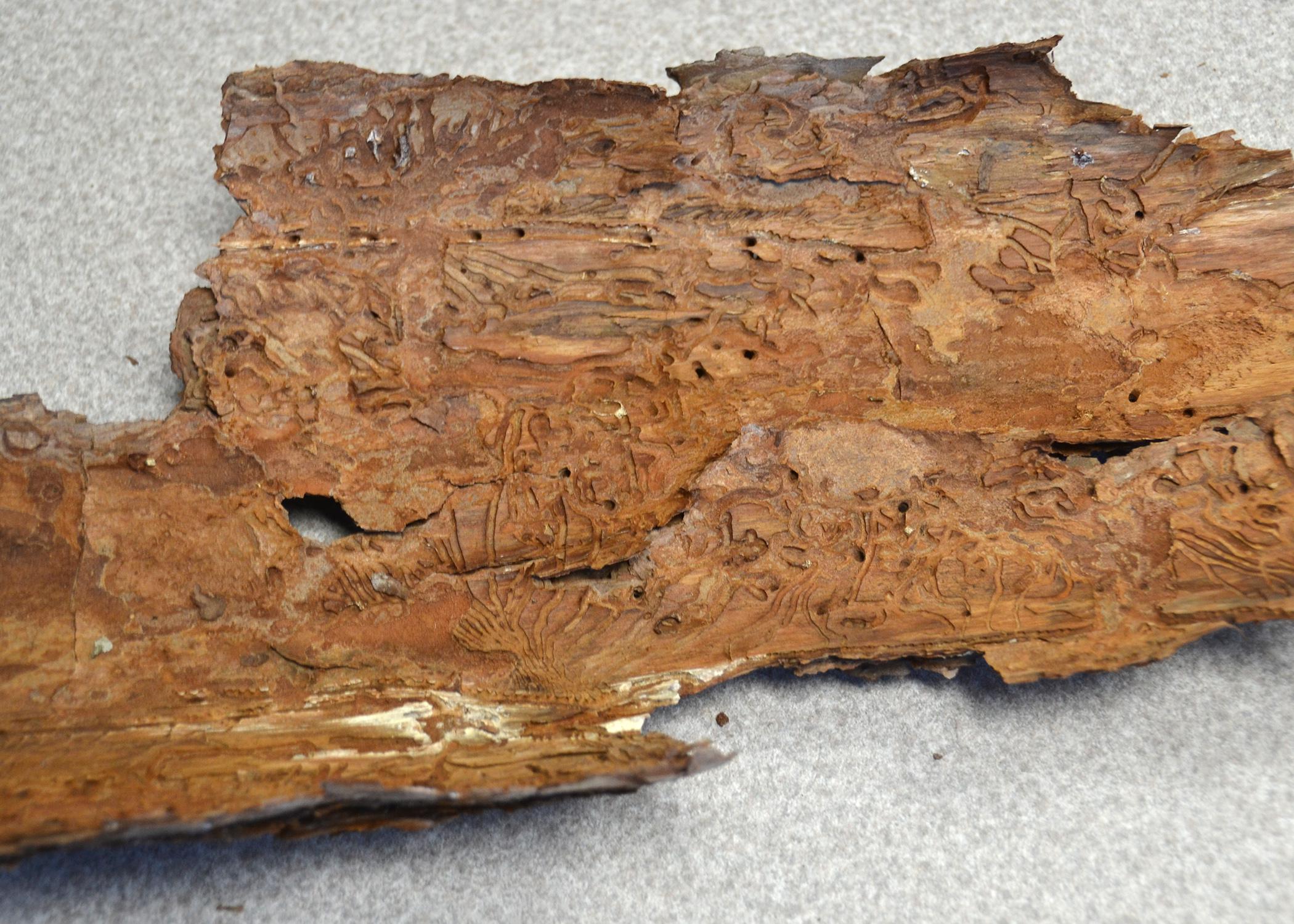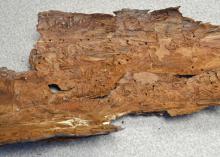Foresters expect bark beetle risk to rise in spring
RAYMOND, Miss. -- As drought takes its toll on Mississippi’s trees, foresters encourage landowners and homeowners to be on the lookout for pine bark beetles as spring arrives.
Butch Bailey, a forester with the Mississippi State University Extension Service, said most of the tree death people are seeing across the state is a result of the ongoing drought that began last summer. However, activity by Ips beetles increased in late 2023, and conditions are right to have increased activity in 2024.
“Anyone who has pine trees, whether in a yard or a forest, is potentially at risk,” Bailey said. “The beetles will seek out stressed trees, such as those that were struck by lightning, are overcrowded or stressed from lack of water.”
In Mississippi, there are five species of pine bark beetles that attack pines. Three of these are Ips beetles. All five species are always present, but Ips are of special concern for drought-stressed trees.
“The good news is that while Ips can cause a lot of damage, they’re not as bad as the southern pine beetle species. And we aren’t seeing a huge amount of southern pine beetles,” Bailey said.
Bailey recommends landowners and homeowners keep an eye on their pines going into spring.
Ips activity is typically highest in November and lessens as temperatures drop and available groundwater increases into the winter. Trap counts by the Mississippi Forestry Commission and the U.S. Forest Service will help give a clearer picture of what infestation levels landowners may see this year.
“All timberland owners can rest easy for now, but I’d be sure to watch my pine stands closely as temperatures warm up in late February and into the spring,” Bailey said. “The drought is a compounding factor that is going to lead to an increase in beetle activity.”
Initial signs of Ips include pitch tubes, yellowing needles at the top of the tree or sawdust-like boring dust at the base of the tree. Pitch tubes are dried, white balls of sap that look like popcorn stuck to the bark of the tree.
“These tubes are where the beetles enter the tree. You have to be looking for them to see them,” Bailey said. “Most landowners don’t see the signs of attack until they notice the crown turning red and/or brown or the bark slipping off. Unfortunately, by this point, the damage is long done, and the tree is dead.”
Curtis VanderSchaaf, Extension forestry specialist, said once Ips infest a tree little can be done. The best way to avoid an Ips beetle infestation is to keep trees healthy.
VanderSchaaf recommends that homeowners:
- Remove trees to prevent overcrowding. Pine trees in a home landscape need at least 15 to 20 feet of space.
- Remove underbrush and competing hardwoods.
- Apply mulch properly to help conserve moisture.
- Water valuable trees deeply during extreme drought.
In forests, thinning is the best method to keep trees healthy. Market conditions in some areas of the state do not support this option.
“In most cases, forested Ips infestations should be left alone to avoid further damage and attraction of beetles to other trees,” VanderSchaaf said.
If there are no active beetles or brood present, dead trees pose no threat to the forest. Instead, these trees provide habitat for natural predators of Ips beetles, such as lizards, spiders, birds and other beetle species.
VanderSchaaf noted that landowners and homeowners should take steps to help ensure trees stay healthy in certain situations or conditions, including hurricanes, tornadoes, wildfires, lightning strikes, ice storms, construction and extreme drought.
“When any of these things occur, you should begin regularly checking your trees for more definitive symptoms or signs of Ips infestation,” VanderSchaaf said. “For example, when drought occurs for two weeks, I would begin checking my trees. In a yard setting, for highly valuable trees, I would consider beginning supplemental waterings.”
Dead trees in home landscapes should always be removed if they pose a threat to humans, pets or structures.
“I tell homeowners who have a standing dead tree that they have only one decision to make,” Bailey said. “They can let Mother Nature remove the tree at a random time and place and hope no one gets hurt, or they can pick the time and place to have it removed safely.
“It’s a fact that having a tree removed by a professional can be expensive but remember that you’re not paying for the tree to come down, that will happen anyway. What you’re paying for is for it to come down safely,” he said.
When having any work done, especially dangerous work such as tree removal, homeowners should look for a person or company that is licensed and insured. Bailey recommends using an arborist who is certified through the International Society of Arboriculture.
Forest landowners can find professional loggers through the Mississippi Professional Logging Manager Program, overseen by the Mississippi Forestry Association at http://mfaplm.com.









